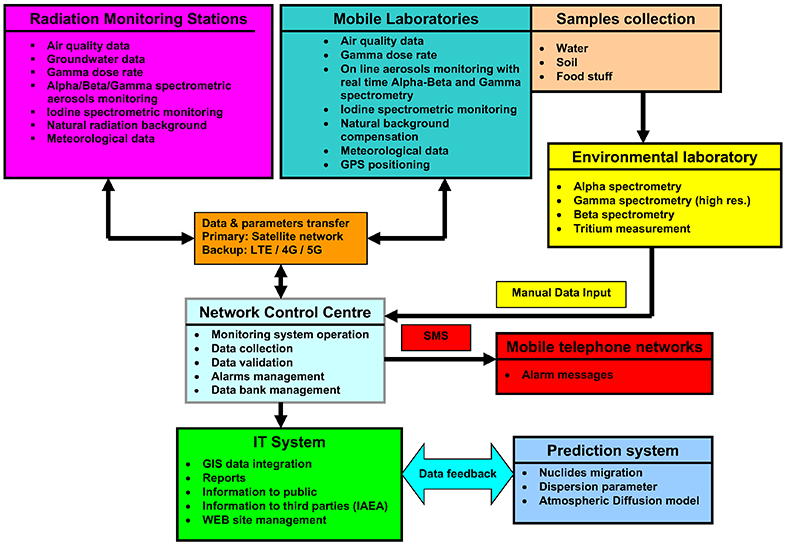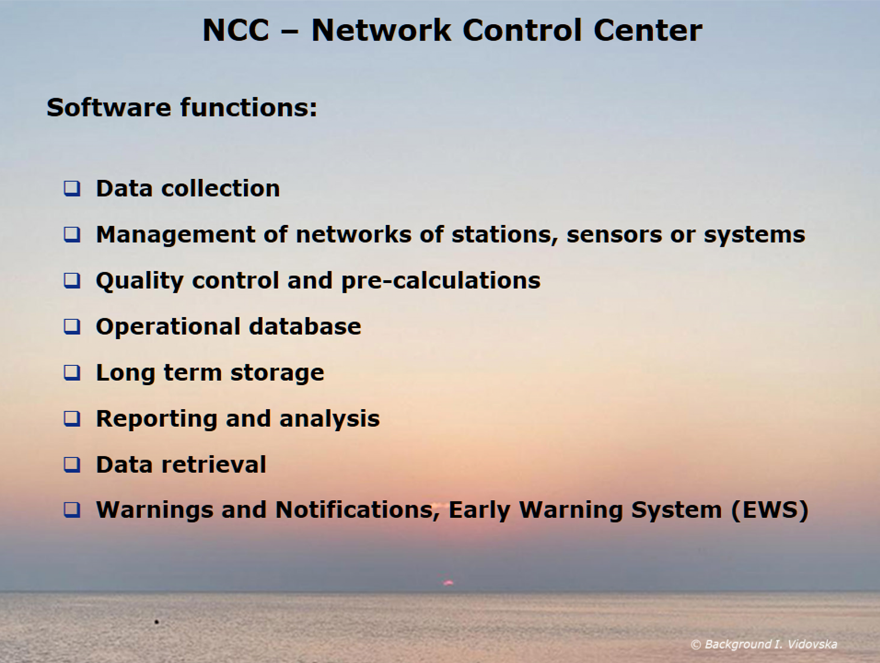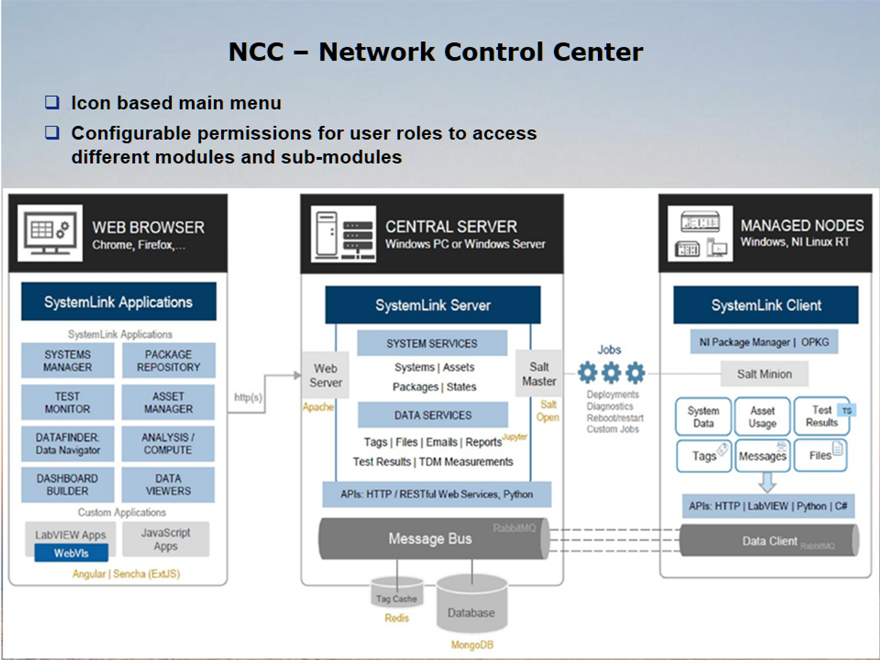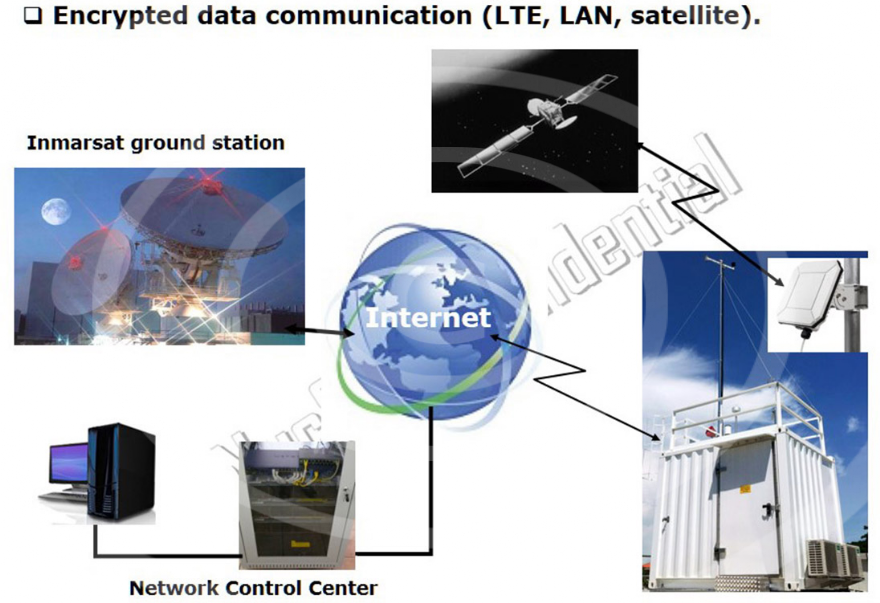Home Monitors Stations Systems References Contacts
Radiation Monitoring - Early Warning Systems
A Radiation Monitoring & Early Warning System (RMEWS) serves the crucial purpose of monitoring and detecting the presence of elevated levels of radiation in the environment. The primary objectives of a RMEWS are as follows:
1. Public Safety: One of the foremost purposes of a RMEWS is to ensure the safety of the public. In the event of a radiological incident, whether it's a nuclear accident, a release of radioactive materials, or any other source of radiation, early detection is vital. The system provides timely alerts and warnings to the public, allowing them to take appropriate actions such as evacuation or sheltering to minimize exposure.
2. Environmental Protection: A RMEWS helps in safeguarding the environment by detecting and responding to incidents that could lead to the release of radioactive substances. This is critical for preventing contamination of air, water, and soil, and for minimizing the long-term environmental impact.
3. Occupational Safety: In situations involving nuclear facilities, laboratories, or other areas where radiation may be present, a RMEWS helps protect the health and safety of workers. Early warnings allow for the implementation of protective measures and evacuation if necessary.
4. Infrastructure Protection: Some critical infrastructure, such as nuclear power plants or research facilities, may be potential sources of radiation. A RMEWS helps in monitoring these facilities and can provide warnings in the event of any abnormal radiation levels, helping to prevent accidents or mitigate their consequences.
5. Emergency Response Planning: The data collected by a RMEWS is valuable for emergency response planning. Authorities can use the information to make informed decisions about resource allocation, evacuation routes, and other measures to protect public safety.
6. International Cooperation: In the case of transboundary incidents, where radiation may cross national borders, a RMEWS facilitates communication and coordination between countries. This is particularly important for addressing the global nature of some radiological incidents.
7. Regulatory Compliance: Many countries have regulations and standards regarding acceptable levels of radiation exposure. A RMEWS helps organizations and authorities to monitor and ensure compliance with these standards.
Decision Support System
The task of the Decision Support System is to enhance the effectiveness of an Early Warning System by providing decision-makers with the necessary tools, information, and insights to make timely and informed decisions in response to potential risks or emergencies.


NCC Network Control Center
Functions:
System Monitoring
q Web interface with full system and network function
q Multi users hierarchy with configurable roles and rights for editing all parameters
q Alarm for technical, radiological or communication events
q Keep logs with defined timestamps / intervals of any event saved for further analysis
q Daily Automatic checker report indicate the detailed status of the system
q Operates Automatically
q Alarm upon user-defined via e-mail, SMS, pager
q Report automatically
q Support communication via LTE, Satellite and LAN
q Over all system monitoring
q User-selectable polling interval, with a 10 minute minimum
q Possibility of automatic periodic data transfer to a cloud based storage
q Access basic data through authenticated remote internet browser (PC and Tablet)
q Support Data Channel export via file copy, FTP, e-mail or serial port
q Support Data Channel import via FTP or file system.
Login management
q Pure HTML
q Assessed over http/https from the Client C/laptop/tablet/smartphone
q Accessible through standard Internet browser (IE, Chrome, Firefox)
q No need to install additional plugins nor add-ons
q Allows access to the system with multi-levels user rights from Client workstations.q Client accounts and theirs user rights are manageable by administrator
Data Management
q Two operation modes are possible:
Normal mode: normal data polling or data exports according to pre-set intervals
Emergency mode: Automatic Data polling in case of increased radiation levels (enhanced polling frequency, enhanced export function).
q Possibility to change the modes in the training interface for exercise purposes
q Data display in graphs and tables fully customizable including, but not limited to:
a) Visualization of measured and mean values;
b) Visualization of measured value status information;
c) Visualization of actual and historical data;
q Storage capability of user specific views (saved configurations);
q Integrated GIS graphical system;
q Colour of status icons changes according to actual status information;
q Auto-refresh function to display the latest measured values on the map;
q Automatically export or import data via files or database connection
q User specific labelling of the GIS stations;
q Data export to csv, txt, pdf, jpg, png, Ps file types;
q Display of detailed measure value status in clear text;
q Printing ability
q Automatic report generation
q Automatically Data Exchange via IRIS, XML, CSV, EURDEP2 or ANSI 42.42.
q Generate automatic customizable radiological and technical data reports
q Customizable data access through an authenticated remote internet browser (including public access if needed) from PC and Tablet
Administration
q Definition of different users for different functions (operator, service user, administrator)
q Assignment of different user roles and rights.
q Easy integration with other systems when required, such as emergency system, public interface, customized interface, etc.
Data collection
q All Radiological and Status Data from Monitoring Stations
q Weather Data
q Other data sources (i.e. survey cameras) if available.
Management of networks of stations, sensors or systems
q Remote configuration
q Remote maintenance
q Remote operation
Operational database – operational storage of data
q Station, variable, sensor, maintenance
q SQL data – time series (measured/forecast data)
q Long term data storage
Reporting and analysis
q Real-time displays
q Reports
q Graphical Products
q Data retrieval
q Warnings and Notifications, Early Warning System (EWS)
Communications
q Operable with standard communication hardware
q Bi-directional data communication with the Monitoring Stations
q Reception of alarms coming from the Monitoring Stations.
q Time synchronisation of the network
q Data collection from remote monitoring stations: automatically and manually


